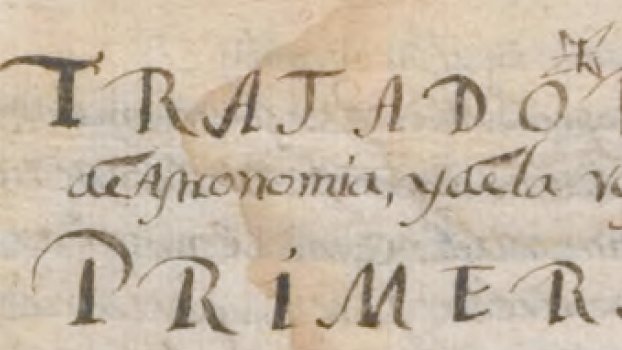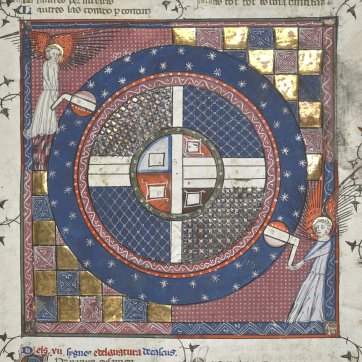
@AnnalsOfScience just published an article I wrote with my colleague @smolinab1 as part of our research on a chronological and cosmographical Tratado composed in the New Kingdom of Granada (c.1696) 🧵(1/17)
tandfonline.com/doi/full/10.10…
tandfonline.com/doi/full/10.10…
The manuscript presumably entitled "Treatise on astronomy and the reformation of time" is housed in the @BibliotecaNalCo. Using other sources (@ArchivoGeneral @Banrepcultural), we read this Tratado as part of the #earlymodern globalisation of Spanish cosmography (2/17) 

Under the influence of Spanish cosmography, the repertorios de los tiempos–books encompassing astronomical, agricultural, ecclesiastical, medical, and calendrical questions–incorporated cosmographical elements coming from Sacrobosco and the Theorica (3/17) 

Antonio Sánchez de Cozar Guanientá, the mestizo priest author of the Tratado, followed the style and order of Spanish cosmographical repertorios and particularly the introduction of cosmographical elements as foundations for his chronological and calendrical elaborations (4/17) 

But Sánchez's summary of cosmography took the form of a singular view of the cosmos. Instead of explaining the changing speed and direction in the motion of celestial bodies by using layers of different density, as it was done in the Theorica planetarum... (5/17) 

... Sánchez claimed that celestial orbs contained a pyramidal knot (🔽), a protuberance in their inner surface in which planets were embedded. The interaction of these knots with the contained orbs caused (and explained) the acceleration and retrogradation of planets (6/17) 

But this view involved another transformation of Scholastic cosmology. Sánchez claims that all bodies–including celestial bodies–tend to a point at the very centre of the cosmos. Instead of Angelic intelligences, this tendency of all bodies, added to their form (🔽), (7/17) 

...explained celestial motion, including "the end of all motion", when the machina mundi shall stop working after the Last Judgment, according to Sánchez's astronomical reading of the New Testament and of Catholic traditions. (8/17) 

But these cosmographical remarks are introductory–typical of repertorios–to what Sánchez considers the core of his work: the corrected length of the solar year and a revised birth date of Jesus. These are central elements in the composition of calendars and chronologies (9/17) 

From the re-calculation of the length of the solar year, Sánchez postulated reforms to the Gregorian calendar, including a new way of using the leap-year, approaching in this way the account of time in the calendar with the chronology of salient historical events (10/17)
The most important event for chronologist was the birth of Jesus, which set a new counting for time. Sánchez argues in favour of the year 3821 after the creation for this event using several arguments, including his astronomical calculations of the supernatural eclipse... (11/17) 

...that occurred during the crucifixion, a topic that was at the very end of Sacrobosco's De Sphaera and that St. Dionysius the Areopagite reported. This eclipse change all interactions between the Sun and the Moon (12/17). 

Sánchez's reform of time includes a full recalculation of the eclipses before and after the supernatural eclipse that occurred during the crucifixion and several tables on calendric calculations (epacts, golden numbers, dominical letters) (13/17) 

Sánchez cosmographical and chronological work indicates the rich dynamics of circulation and production of knowledge in the #SpanishAmerican world in the #earlymodern period, in a region usually undervalued in the #histsci such as New Granada. (14/17) 

With all this (and more detailed arguments in the paper!) we connect Sánchez to prominent tensions and debates typical of the #earlymodern period: forms of authority, experience and observation, universal vs local. (15/17)
This paper is part of an ongoing research on the Tratado which includes other topics barely mentioned in the paper such as #astrology, #medicine, #Geography, #instruments, #navigation, #diagrams, #illustrations, #colonialscience, #LatinAmerica. (16/17)
We are conducting this research at @EdinburghUni @UniBergamo @UdeA @UoE_STIS @filosofiaUdeA.
The link to the digital version of Sánchez Tratado (via @BibliotecaNalCo): bit.ly/3ycC8xN
Thanks for reading! 🙏 (17/17)
The link to the digital version of Sánchez Tratado (via @BibliotecaNalCo): bit.ly/3ycC8xN
Thanks for reading! 🙏 (17/17)
• • •
Missing some Tweet in this thread? You can try to
force a refresh



